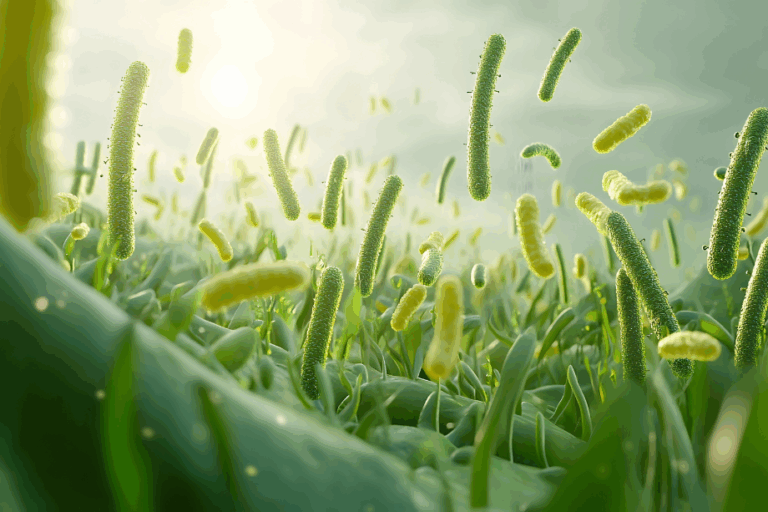You (strongly) voiced your desire to avoid them and interrogated your health care provider about whether they’re absolutely necessary, but the verdict is in: you need to take a course of antibiotics. Now what? Although it’s true that your microbiome will take a hit and may be permanently altered, it’s still possible to reduce the damage by supporting your gut and your microbes during and after antibiotics. These tips will help minimize your microbial losses, maximize your microbial regrowth, and mitigate the effects of antibiotics on your gut.
1. Take a probiotic during and after antibiotics.
Several studies have documented the usefulness of probiotics in decreasing side effects like antibiotic-associated diarrhea (AAD) and Clostridium difficile (C. diff ), as well as repopulating your gut. Start the probiotic at the same time you start the antibiotic, but try to take the probiotic dose at a time as far away from the antibiotics as possible. So, for example, if you’re taking an antibiotic twice daily at 8:00 a.m. and 8:00 p.m., you would take the probiotic at 2:00 p.m. You should continue the probiotic for at least one month after finishing the course of antibiotics. Probiotics containing strains of Lactobacillus and Bifidobacteria are the most useful, as well as those containing the beneficial yeast Saccharomyces boulardii (500 mg daily), which is especially helpful in preventing C. diff and which isn’t susceptible to antibiotics.
2. Request a narrow-spectrum antibiotic.
This will minimize damage to your microbiome by targeting a narrower range of bacteria. Culture and sensitivity results from urine, stool, sputum, blood, skin, or other body parts, depending on the type and location of infection, will reveal which bacteria are present and which antibiotics they’re sensitive to, allowing your doctor to pick a narrow-spectrum antibiotic that will still be effective, rather than a broad-spectrum one that will needlessly kill off additional non pathogenic bacteria. Having the culture results before starting therapy will ensure that the infection you’re being treated for is actually sensitive to the antibiotic you’re taking, and will help avoid retreatment with additional courses of antibiotics.
3. Eat prebiotic foods to support your microbiome.
Foods high in fiber and resistant starch are especially important when you’re taking an antibiotic. Not only do they provide food for your microbes, but they also help to promote species diversity, which can decrease dramatically after a course of antibiotics. Fermented foods like sauerkraut and kimchi are a powerhouse duo of pre and probiotics: they feed your gut bacteria as well as provide additional live microbes themselves.
4. Eliminate sugary, starchy foods.
Deleting these foods from your diet is an essential part of rehabbing your microbiome, and it’s particularly important when you’re taking an antibiotic. Foods (and drinks) high in sugar and starchy foods that are broken down into simple sugars in the gut send undesirable yeast species into a feeding frenzy, further contributing to microbial imbalance induced by the antibiotics. If you’re prone to yeast infections, following a strict anti-yeast diet that excludes any and all sugar while taking antibiotics and for thirty days afterward may be advisable.
5. Eat lots of yeast-fighting foods.
Antibiotics are the main cause of yeast overgrowth, which can cause vaginal infections and lots of other symptoms. Foods with significant anti-yeast properties include onion, garlic, seaweed, rutabaga, pumpkin seeds, and coconut oil. Make sure you’re incorporating lots of these foods into your diet while taking antibiotics.
6. Drink ginger tea.
Ginger has a soothing effect on the digestive system and can help to reduce gas and bloating associated with taking an antibiotic. For best results, peel a one-inch piece of fresh ginger root, cut it into small pieces, and place in a teapot or thermal carafe. Then add two cups of boiling water and let steep for twenty to thirty minutes. Strain and serve.
7. Use bentonite.
Medicinal clay has been used as far back as ancient Mesopotamia. Bentonite can help treat AAD by thickening stool, and it also has antibacterial (E. coli and Staphylococcus aureus) and antifungal (Candida albicans) effects. Use one tablespoon of bentonite clay (mixed with one tablespoon of unsweetened applesauce, if desired, for taste) one to two times daily until symptoms of AAD are alleviated. Be sure to separate the clay from the antibiotic and probiotic doses to avoid binding them and reducing their efficacy. Stop using the clay if constipation develops.
8. Make mushroom tea.
Shiitake and maitake mushrooms have been used as medicine by various cultures throughout the world for thousands of years. They have significant immune-boosting properties and antifungal effects. Chop two dried mushroom caps into small pieces. Add them to a small kettle or pot of water (about four cups) and bring to a boil. Reduce heat, cover, and simmer for about thirty minutes. Strain and serve. You can drink this mushroom tea daily while you’re taking antibiotics.
9. Support your liver.
Antibiotics, like most drugs, are broken down in the liver, so it’s important to make sure that your liver is as healthy as possible while taking a course of antibiotics in order to avoid liver damage. Dark green leafy vegetables such as kale, spinach, and collard greens, as well as broccoli, beets, and artichokes help keep the liver healthy and promote the production of healthy bile. Avoiding alcohol is essential while on antibiotics, since it increases the likelihood of liver toxicity.
10. Skip the acid suppression.
Blocking stomach acid and taking an antibiotic at the same time is a recipe for microbial disaster since the lack of stomach acid leaves you vulnerable to overgrowth of pathogenic bacteria such as C. diff that can lead to serious infection. If you think you may need to take an antibiotic, try to stop any acid-suppressing drugs at least seventy-two hours beforehand and while taking the antibiotic to allow levels of stomach acid to return to normal.
Of course, avoiding antibiotics is always the most effective strategy for preserving your microbes!







